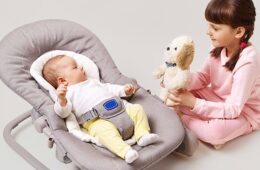Infant Crying, Fussing, and Colic

Infant crying, fussing, and colic ? Babies everywhere cry, especially during the first 3 months after birth. Even chimpanzees follow this pattern (Bard 2004).
But this doesn’t mean that parenting has no influence. Parents have an important effect on the amount of time babies cry.
• Babies often cry because they are in pain, or distressed, or hungry. Prompt, loving care can make them feel better and stop crying. Failure to respond can make it worse.
• Babies tend to cry when they are out-of-contact with their mothers. Studies indicate that young babies cry when they are separated from their mothers and they usually stop crying when they are reunited (Bell and Ainsworth 1972; Christensson et al 1995).
• Carrying a baby can quiet him down -- but you have to keep moving. Research research suggests it's a common calming response in many mammals: Infants experience slower heart rates, reduced body movement, and reduced crying when they are carried by someone who is walking (Esposito et al 2013). But it doesn't last, even among healthy, non-colicky infants. Put the baby down and the calming effect may evaporate.
• Babies may be soothed by rocking and skin-to-skin contact (Byrne and Horowitz 1981; Spencer et al 1990; Gray et al 2000). In addition, babies under 8 weeks of age may cry less when they are safely and appropriately swaddled (van Sleuwen et al 2007).
• Far from getting "spoiled," young babies seem to cry less when they are indulged. In societies that promote a more indulgent approach to baby care (immediate responses to crying, very frequent nursing, lots of physical contact, and cosleeping), babies spend less time crying than they do elsewhere (e.g., Barr et al 1991). We see the same effect among chimpanzees, too. When chimpanzee infants are cradled by their mothers 100% of the time, they cry less than when they are held by the moms only 25% of the time (Bard 2004).
Let’s Glow
Glow is here for you on your path to pregnancy
Glow helps you navigate your fertility journey with smart tools, personalized insights, and guidance from medical experts who understand what matters most.
25+ million
Users
4.8 stars
200k+ app ratings
20+
Medical advisors



